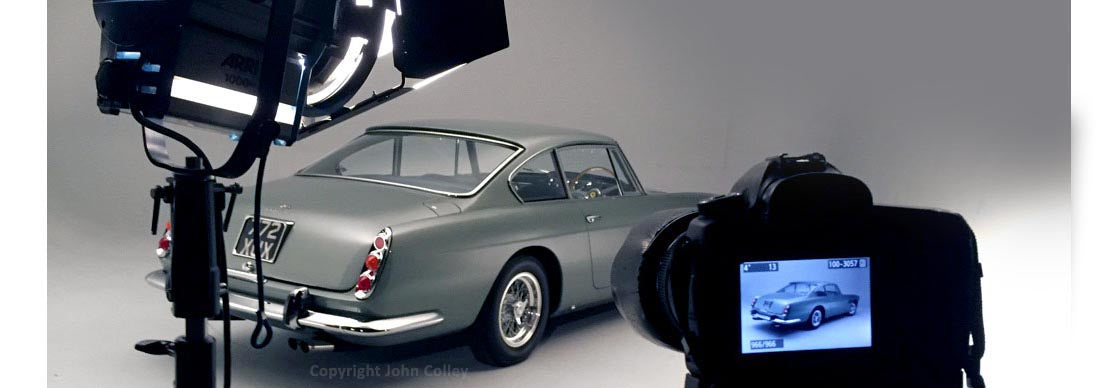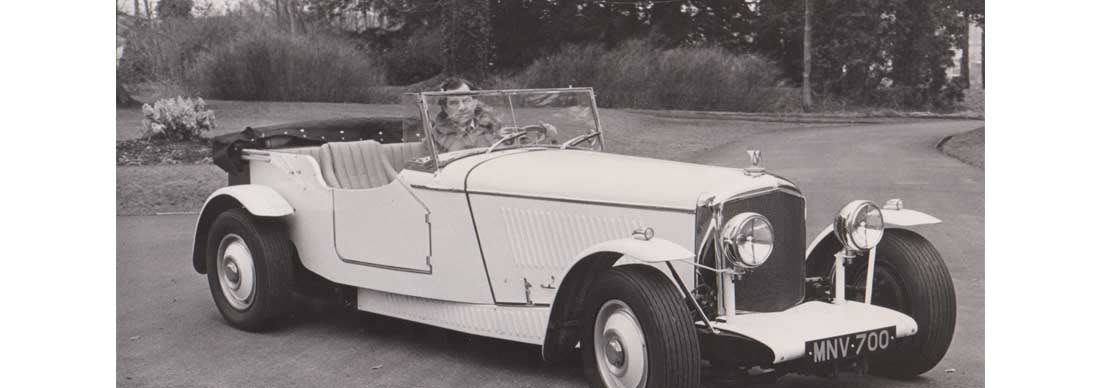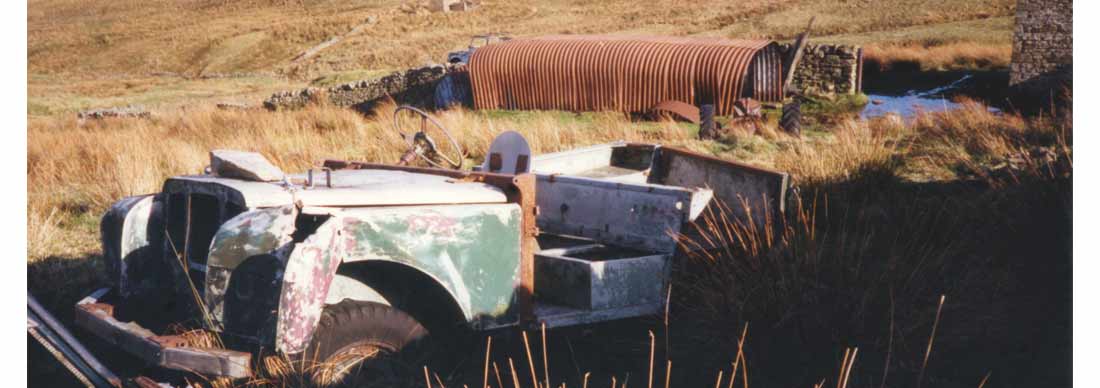
Car Studio Photography by John Colley
Fangio’s 1957 Monaco-winning Maserati 250F, Stirling Moss’s 1961 Monaco-winning Lotus 18, the unique Lumsden-Sargent Lightweight E-type, Raymond Mays’s glorious ERA R4D and other iconic historic racing cars have left their tyre marks, and the odd drip of oil, on my studio floor. To have the opportunity to photograph them for some of Porter Press’s finest books has been an absolute privilege.



An established career in photography and a passion for motorsport came together with the reopening of Donington Park in 1977. Through connections at Donington, I started photographing race meetings for Autosport magazine, which led to me shooting the front cover for the inaugural issue of Classic & Sports Car magazine, featuring Anthony (now Lord) Bamford’s Ferrari 250 Testa Rossa. My first meeting with Philip Porter was while doing a feature on Neil Corner’s collection for the same magazine and over 30 years later we are still working together.

Towards the end of the ‘90s, the appeal of rushing round race circuits and rally stages, covering all aspects of motorsport, was beginning to wane and the lure of the peace and quiet of the studio beckoned (with maybe a little modern jazz in the background). The trouble is, most photographic studios are too small to even get a car into, so I set to and extended the barn at the back of my house to make my first drive-in studio. This was a success business wise but it was still too small. So, in 2005 I bit the bullet and bought a small industrial unit in Derby and built the studio I operate in today. One important addition has been a flush remote control turntable set into the floor for easier and quicker positioning and, importantly, taking away any risk of damaging the car.
Technically speaking, photographing cars in studio is all about controlling reflections in shiny bodywork and details. In the studio, walls, floor and ceiling are all curved into one continuous open box, known as an infinity cove. Painted pale grey (some studios are white) the cove allows the light to be bounced off the smooth surfaces. Lighting is by continuous light, cinema-style spotlights, mainly one and two Kilowatts output.
I use Canon digital SLR cameras and lenses and clean up the images (rogue reflections, etc.) in Photoshop (that’s a skill all we aging snappers have had to master).

The shoot will generally start with the cove ceiling flooded with light from two 2K lights to give a basic ‘sky light,’ then different shape pools of light are shone onto the walls and floor to create highlights on the bodywork. Reflector boards of white or grey and black cloth are also used to control the lighting and reflections. For awkward details, I will sometimes use mini spotlights pointed directly at the subject but moved around during the time exposure to soften the shadows (pretentiously known as painting with light). As in many things in life, the principles are simple, but the application needs a bit of experience.

Digital photography has opened up all sorts of creative opportunities, but I class my style as more traditional which, I think, allows readers to absorb themselves in the fabulous machinery featured in the Porter Press books without being overly distracted by creative flights of fancy (that’s my opinion anyway). I want people to be able to see all the detail clearly and be able to read the history in these cars that have lived a life. The editor of the now sadly defunct magazine, Supercar Classics, once said to me, ‘I want our readers to feel they can almost touch these rarely seen cars’. That stuck with me.









2 comments
I have had the pleasure of watching John photo my classic Land Rover for a magazine feature some years ago, it was eerie watching the vehicle rotating on the turntable in front of me. I have already enjoyed seeing his work since then, the photos show their subject at its best.
Andrew Turford
Mr. Colley’s work and, indeed, that of each of the Porter Press enlisted photographers is exactly perfect in concept in my decidedly unlearned opinion. I want to see the subject from each angle in sharp detail. I want to see close-up the astounding design and workmanship of the visionaries who first imagined these Great (and Exceptional) machines. I want to see illuminated all I’ve just read about. I’ve just completed the R4D biography and can give no greater praise than to say the photo essay at the end matched the text of the history magnificently.
Charles Hill
Leave a comment
This site is protected by hCaptcha and the hCaptcha Privacy Policy and Terms of Service apply.